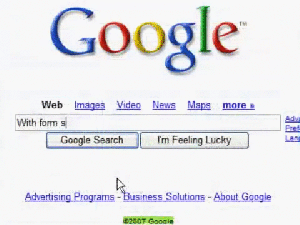Watching the video The Machine is Us/ing Us (2007) by Michael Wesch, made me truly think about how we use the World Wide Web. We use the web to update our blogs, share web pages, share and add content on social media platforms and more, all while viewing content that has also been shared by others. But how are we able to have the act of changing online content as part of our daily DNA?
It’s all about the coding.
Wesch’s video (from time stamp 2:10 – 2:40) demonstrates how XML code moved the web beyond the static pages of read only content to a dynamic web, where interaction and user content creation is possible. The ability to upload and share content on the web became something that could be achieved by anyone with web access because XML removed the need for users to have to use complicated HTML code. In other words, through XML, the entire process of creating online content became user friendly, and this was a key step into what is known as Web 2.0.
Usability drives changes in technology and is motivation for making tools easier for the everyday user who prefers to just click and go. When considering usability as a major difference between Web 1.0 and Web 2.0, this analogy comes to mind:
DOS is to HTML as Windows 95 is to XML.
For DOS and HTML, a grasp of programming language was a must and users faced time consuming, if not frustrating, challenges if they could not master the skill of coding. What Windows 95 and XML brought about was a key change in their respective domains as it relates to usability – direct interaction with code was no longer necessary. Welcome to user friendly.
Want to find out a bit more about XML? Click here.
References
Aghaei, S., & Nematbakhsh, M. A., & Farsani, H. K. (2012, January). Evolution of the World Wide Web : From Web 1.0 to Web 4.0. International Journal of Web & Semantic Technology (IJWesT), 3 (1). Retrieved from http://airccse.org/journal/ijwest/papers/3112ijwest01.pdf
Cormode, G., & Krishnamurthy, B. (2008, June 2). Key differences between Web 1.0 and Web 2.0. First Monday, 13. Retrieved from http://journals.uic.edu/ojs/index.php/fm/article/view/2125/1972
Kelly, K. (2005, August). We are the Web. Wired Magazine, (13.08). Retrieved from http://archive.wired.com/wired/archive/13.08/tech.html
Mangesh. V. S. (2007, September 14). What makes XML such a great technology. Retrieved from http://www.codeproject.com/Articles/20486/What-makes-XML-such-a-great-technology
Strickland, Jonathan. (2008, January 28). Is there a Web 1.0?. Retrieved from <http://computer.howstuffworks.com/web-10.htm>
TheOnDemandDemoGuy. (2010, January 25). An Introduction to XML: WML and Web 2.0 Part 2 [Video File]. Retrieved from http://www.youtube.com/watch?v=16q5bbeO3xI
Wesch, Michael. (2007, March 8). The Web is Us/ing Us (Final Version) [Video File]. Retrieved from http://www.youtube.com/watch?v=NLlGopyXT_g

Reblogged this on @mattfrom0161.
LikeLike